



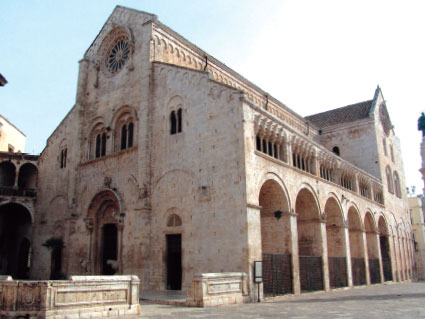
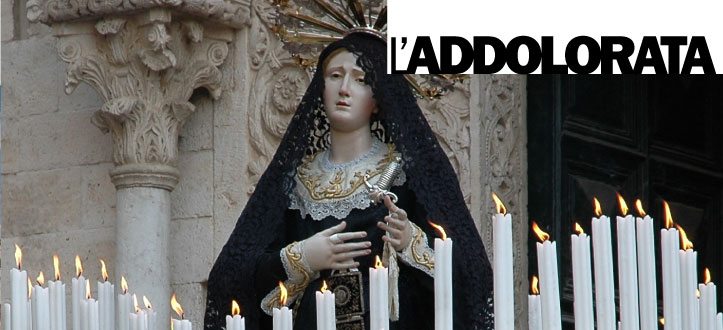
Starts from the beautiful Romanesque Cathedral. The statue of Our Lady of Sorrows, dressed black with a dagger piercing the Virgin’s heart, ionizes the painful mourning of all the mothers who have lost their son. The procession moves across the streets of the old town during all the morning followed by the primary school pupils. The white voices sing “La Desolata”, traditional hymn dedicated to Our Lady of Sorrows and composed in the early twentieth century by the canon Cepollaro on the verses by Bishop Pasquale Berardi.
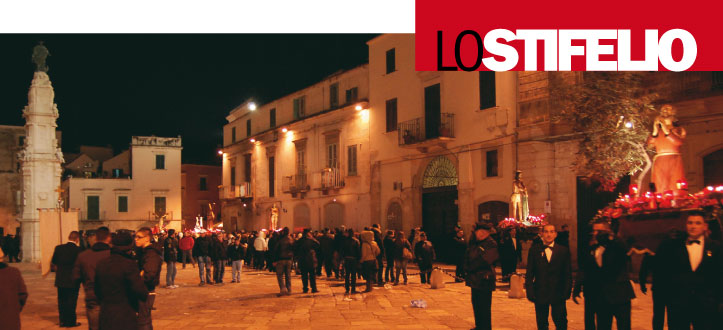
In the heart of the night from the XVII century Church of S. Domenico leaves the Procession of the Mysteries, led by the Arciconfraternita Maria SS. del Rosario. This is one of the oldest rites, performing eight scenes representing some moments of Jesus Christ’s Passion: Christ praying in the Olive Grove, Ecce Home, Christ bound to the column, Christ at Calvary, the Pieta group, Dead Christ, and the statue of Our Lady of Sorrows. These statues, genuine masterpieces of wood sculpture, are borne on the shoulders of the bearers, wearing the typical ‘stiverio’, a long tailcoat of popular tradition origin. At the end of the procession, the local musical bands play the traditional funeral marches by Carelli, Delle Cese and Abbate, famous composers from Bitonto. At 7 a.m. in Piazza Aldo Moro, Via Crucis reading as the Holy Statues approach the square.
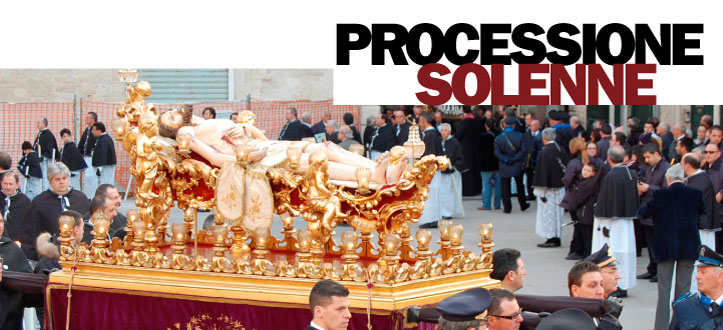
The church del Purgatorio is the scene of the start of the Solemn Procession of Good Friday. Through the enchanting lanes of the old town and some of the streets near the old town walls, the statues of Christ lifted from the cross (la nach) and of Our Lady of Sorrows, follow the Brothers of the Arch confraternity of “Holy Mary of the Intercession” (Santa Maria del Suffragio). Then comes the “Legno Santo”, a fl oral tribute created by local artists in a different form every year, inside which is a silver cross made in the 19th century containing two fragments of the True Cross. The brothers, wearing mozzetta and black gloves, also carry an authentic copy of the Holy Shroud, fabricated in Turin in 1646. The procession is accompanied by an escort of Carabinieri in ceremonial uniform, and followed by the Gonfalon of the town, and the civic and military dignitaries. The most eagerly awaited and moving moment of the procession is when it reaches Piazza Moro at one in the morning, and the town lights are turned off so that the only illumination comes from the fi res positioned around the perimeter of the piazza.
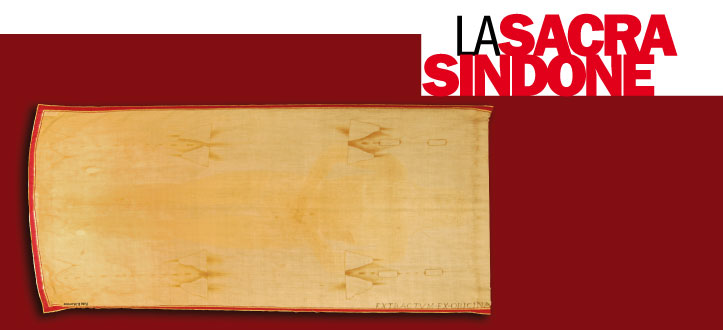
The Bitonto Shroud is one of the only three existing copies of the Holy Shroud, the linen sheet that was used to wrap the body of the dead Christ, fabricated “ex contactu” (third class relic) in 1646 during its being displayed in Turin. It was donated to the town by the bishop Monsignor Alessandro Crescenzi, who had been Apostolic Nunciature in the Piedmont capital, with the Savoy family. The fi rst time it was carried through the streets of the town on 25th May 1659 was almost as a triumph.
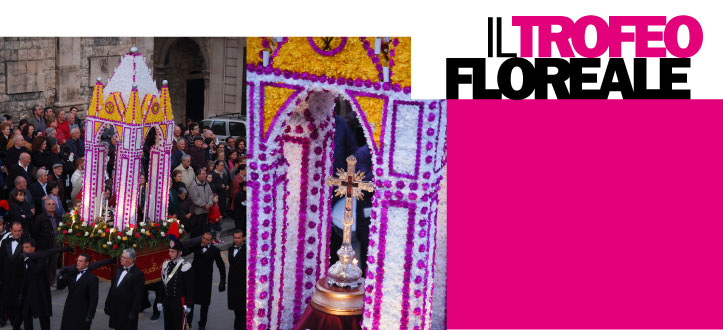
The floral tribute surrounds the “Legno Santo”, two splinters of wood from the True Cross, one of the three parts (the other two are claimed to be in Rome and Jerusalem) the Cross was divided into, and which according to tradition, Helena the mother of the Emperor Constantine, managed to take away from Jerusalem. These splinters were donated by the archbishop of Siponto and Manfredonia in 1711, and are contained within a large silver and crystal cross. Every year the most creative local craftsmen are called upon to join efforts to create the fl oral tribute, making the “Legno Santo” unique for every edition of Holy Week.